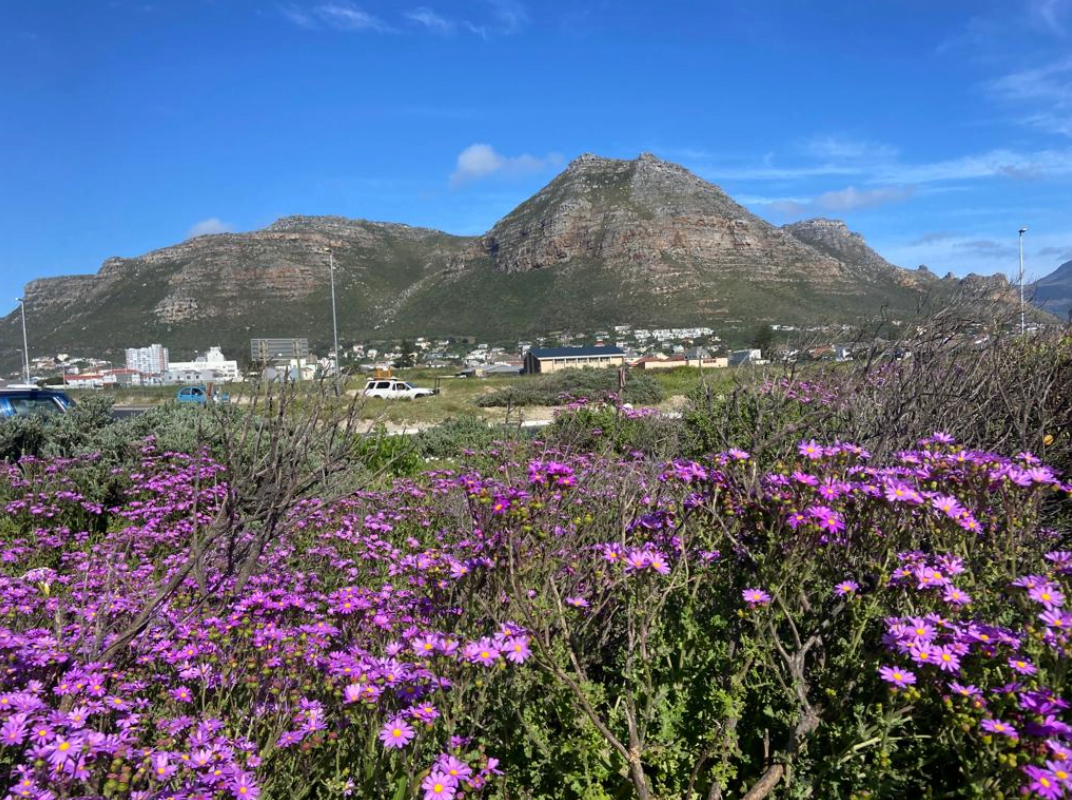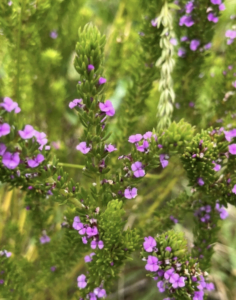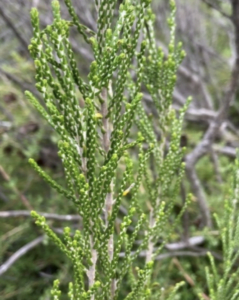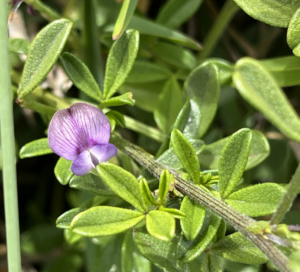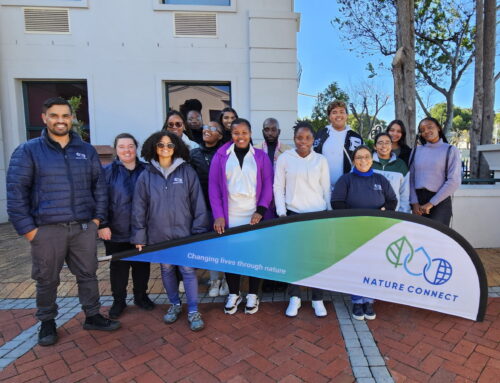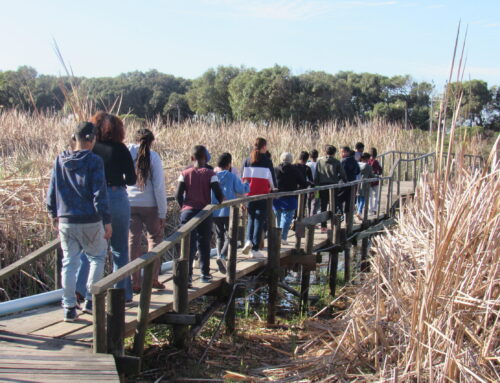“The Earth laughs in flowers” – Ralph Waldo Emerson
Explore the enchanting world of Cape Flats flora with us! Two passionate members of our Nature Care Fund team are here to share the fascinating stories of Cape Flats Sand Fynbos and Cape Flats Dune Strandveld. Let’s journey together into the wonderful world of plants, celebrating the amazing diversity and ecological marvels of these precious ecosystems.
Celebrating Cape Flats Flora on Plant Appreciation Day
– Written by Safiyyah Hattas
On this special day, we show appreciation to plants and their astounding contributions to the environment. Plants are the foundation of the Earth, providing us with resources like oxygen, which allows us to breathe. They assist in soil erosion prevention, air purification, medicinal value, provide shade and are a food source to humans and animals.
Plants bring a sense of calm and provide aesthetic value with their beautiful colours and shapes. Their uniqueness and diversity has resulted in a variety of vegetation types, where certain plants can only be found in that vegetation type due to their unique tolerances and adaptations. Some threats that plants face are the invasion of alien plants, development and habitat fragmentation, as well as the illegal trade of flora. These threats can be significant in some species which results in many vegetation types and plant species being listed on the IUCN Red List.
When considering Cape Flats Dune Strandveld, for example, this vegetation type can be found along the coastal, lowland sections of Cape Town. Majority of the plants found in this vegetation type assist with dune stabilisation, and are adapted to withstand salt sprays. This vegetation type has been listed as Endangered on the IUCN Red List.
Soralia Village Conservation Area in the Muizenberg East Biodiversity Cluster consists of Cape Flats Dune Strandveld habitat, and has four IUCN Red List species, namely, Muraltia mitior (Endangered), Passerina paludosa (Endangered), Psoralea glaucina (Critically Endangered), Psoralea repens (Near Threatened). Psoralea glaucina occurs only in Soralia Village, making this a very special plant to conserve. The Muizenberg East team monitors these four species through annual GPS tracking to record their presence and growth over time.
- Muraltia mitior
- Passerina paludosa
- Psoralea repens
- Psoralea glaucina
True appreciation of South Africa’s unique flora involves acknowledging the ecosystem services they provide, making efforts to conserve the natural patches remaining, and to ideally increase the occurrence of red list species through planting exercises. One can celebrate Plant Appreciation Day by planting locally indigenous plants or creating a green space in your home. If you live in the Cape, how about visiting a local botanical garden or nature reserve to bask in the beauty and diversity of the Cape Floristic Region, one of the worlds Biodiversity Hotspots.
True appreciation of South Africa’s unique flora involves acknowledging the ecosystem services they provide, making efforts to conserve the natural patches remaining, and to ideally increase the occurrence of red list species through planting exercises. One can celebrate Plant Appreciation Day by planting locally indigenous plants or creating a green space in your home. If you live in the Cape, how about visiting a local botanical garden or nature reserve to bask in the beauty and diversity of the Cape Floristic Region, one of the worlds Biodiversity Hotspots.
Milnerton Racecourse Conservation Area: Celebrating Plants on International Plant Appreciation Day
Written by Shaquille Benjamin
International Plant Appreciation Day, which is celebrated on the 13th of April, is a time for plant enthusiasts to celebrate the vital role plants play in our environment and the anthropogenic services it provides. Plants are crucial for reducing air pollution by absorbing harmful pollutants, combating climate change by converting carbon dioxide into oxygen, and preventing desertification through their root systems. Additionally, they provide essential habitat for wildlife and serve as a primary source of food, medicine, and raw materials for humans, enriching both our lives and the planet.
Plants are distributed across diverse global ecosystems, ranging from rainforests to deserts and even Arctic regions, evolving over time to thrive in their specific environments. Particularly rich in plant diversity is South Africa’s Cape Floral Kingdom, which hosts the fynbos biome. Within this biome, one notable vegetation type is the Cape Flats Sand Fynbos, which is found at Milnerton Racecourse Conservation Area (MRCA).
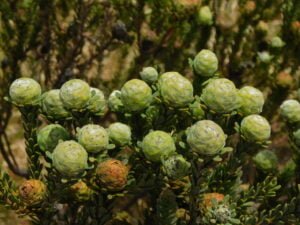
MRCA is a 19 hectare site that is home to Critically Endangered Cape Flats Sand Fynbos. This vegetation type is highly diverse within MRCA, home to 329 indigenous plant species with 38 of them being on the IUCN red list of threatened species. The diversity of IUCN red listed plants include Psoralea repens (NT), Lachenalia contaminata (NT), Babiana nana (EN), Hermannia procumbens (CR), Cliffortia ericifolia (EN) and one of the sites most popular plants known as Leucadendron levisanus a critically endangered Protea species. Despite the high diversity of plants that MRCA hosts, only 1% of the Cape Flats Sand Fynbos vegetation type is currently under conservation protection, while facing threats from alien plant invasion, inappropriate fire regimes, and urbanisation.
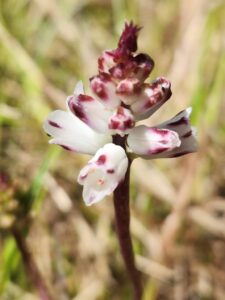
As we celebrate International Plant Appreciation Day, it’s essential to recognize the significance of plants in sustaining life on Earth. From their crucial role in environmental balance to their immense biodiversity, plants are fundamental to the health and well-being of our planet and all its inhabitants. The decrease of the critically endangered vegetation types like the Cape Flats Sand Fynbos emphasis the urgency of conservation efforts not only locally but across the globe. By preserving and protecting these invaluable ecosystems, we can ensure a brighter, greener future for generations to come. Let us celebrate and cherish the remarkable diversity and resilience of plants on International Plant Appreciation Day.

